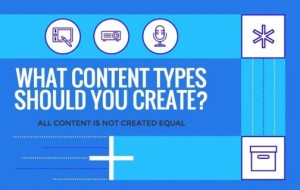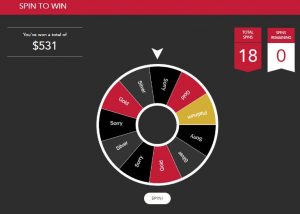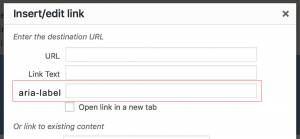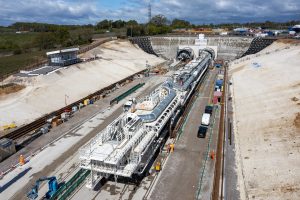It’s no secret that digital advertising is growing. eMarketer estimates digital advertising will be 35.9% of total ad spend this year and 38.4% by the end of 2017. This growth is undoubtedly fueled by mobile advertising, with mobile spend estimated to encompass 64% of total digital advertising spend.
As digital advertisers, the more we increase our spend the more conversion volume and revenue we expect. We also need to ensure we’re measuring and optimizing for a very mobile-specific conversion as our digital spend shifts to mobile: the call conversion. According to BIA/Kelsey, digital advertising will drive 162 billion call conversions to US businesses by 2019 (up 50% from 2016).
Not only is call conversion volume growing, but phone calls are lucrative. They’re 10x more likely to convert to revenue than online form fills. As we enter the new year, I want to share my top 10 tips on how to optimize your digital campaigns to drive, measure, and attribute call conversions to improve ROI.
Break Out Call Conversions by Device Type
A click-to-call versus a click to a landing page will cost PPC marketers the same amount. Calls from search can happen from call extensions and the landing page. Both call extensions and calls driven from landing pages can happen from a smartphone, tablet, or desktop device.
When it comes to bidding in Google and Bing, we bid at a device level. The better we understand where calls are being driven from and on which devices, the more efficient we can set our bid modifiers.
Use Local Phone Numbers
Displaying a local phone number on the search results page and landing page gives the customer a perception that they’ll be directly linked to the nearest location. Google estimates that local numbers will help increase your click-through rate by up to 3X, as consumers’ perceptions of a local number is that they will get connected to the business closest to their proximity.
Get Keyword-Level Call Attribution in PPC
For the sake of your bidding optimizations you need to know which keywords are driving conversions, all the way down to the match type. Most of us are using a bid algorithm that relies on keyword conversion data to make adjustments on bids. The more data you give the algorithm, the more efficient the bidding will become for you. Make sure the algorithm knows if keywords are driving call conversions, especially if those keywords get high click volume on mobile. Keyword-level call attribution is also vital in reporting on accurate CPA as well as the true ROI.
Pass Only Quality Call Conversions Into Your Bid Management Tools
Measuring call conversions at the keyword level is extremely important, but it’s very important that you only report on quality call conversions, especially in your bid management tools. Bid tools bid up or down depending on the day, time, CPA, and device. Ensure the conversion data your bid tool is making adjustments from is actually conversion volume rather than every call. This is also important for online conversions. Don’t give credit to keyword that drive poor quality conversions.
Audience- and Creative-Level Call Attribution in Social and Display
If you’re running social media and display campaigns the attribution level is different from search. But you still want to get as granular as possible to make budget and bid decisions for efficient conversions. By uniquely tagging every single ad creative and campaign, you can know exactly which efforts are driving online conversions and call conversions. Again, make sure you only give credit to quality call conversions and optimize off of good data that will improve your ROI.
Attribute Post-Impression Call Conversions
The value of an impression can be powerful, as multi-channel attribution reports show display impressions increase branded search volume and direct traffic. However, in digital marketing it’s easy to assume that impressions only lift online traffic and conversions. In reality, impressions will also lift offline conversion volume. When optimizing your display channel, there are many ways you measure the true impact of call conversions. One way is to attribute call conversions down to the placement and creative level.
Learn Which Pages Drive Your Customers to Call
Google Analytics is a powerful analytics tool available to all marketers for free. The page path data in Google Analytics is one of the most powerful reports because digital advertisers have to include a destination URL for their ad creative. When we drive a click to a landing page, we want that landing page to be relevant to the ad as much as possible. The more relevant, the more likely it will drive customers to convert either online or offline via a phone call.
When setting up your Google Analytics conversions, you’ll want to understand which pages are driving online conversion and call conversions. This way, you can A/B test your landing pages and optimize with full data.
Discover the Most Common Paths Driving Phone Calls
Another great Google Analytics report is the conversion path report. By understanding which channels are on the path to conversion (either first, second, third, and so forth) you can confidently make bid and budget optimizations. Including call conversions as a conversion type in your Google Analytics you can see what path consumers take to convert online and offline. This will allow you to maximize your campaigns to drive the most valuable conversions and increase ROI.
Listen to Calls Driven by Your Digital Marketing
I mentioned the importance of passing quality calls as a conversion type, but another great way to use your call data is to actually listen to the conversations that your customers have with the sales team. As a digital marketer, you can use conversation insight to build new audiences, creative, and even keywords that can help grow your digital presence.
Test a Click-to-Call Ad Type
If you see call conversions being driven by your digital marketing then you should test click-to-call ad types in both your display and social campaigns. It gives your customer a quicker way to get in touch with your business. This works really well for lower funnel customers because they have a higher purchase intent. It will be easier for your sales agents to convert them to customers if they can directly answer questions in real-time. And make sure you route the call properly. You want to have someone from your sales team ready to answer!
I hope these 10 tips give you some good optimization ideas for the new year.
Business & Finance Articles on Business 2 Community(86)





